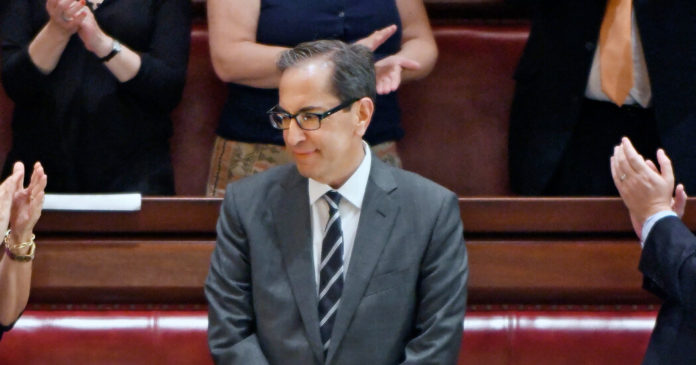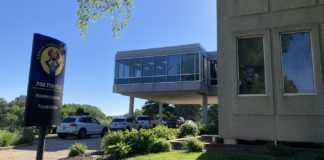
Judge Paul G. Feinman, the first openly gay jurist to serve on New York State’s highest court, the Court of Appeals, died on Wednesday at a Manhattan hospital. He was 61.
The cause was acute myeloid leukemia, his husband, Robert Ostergaard, said. Judge Feinman had been treated for the disease when he was appointed to the appeals court by Gov. Andrew M. Cuomo in 2017.
His appointment came barely a decade after the Court of Appeals had ruled that the state Constitution conferred no legal right for same-sex couples to marry. That right was granted by the Legislature in 2011 by the Marriage Equality Act.
Judge Feinman was unanimously confirmed by the State Senate, though during a hearing by the Senate Judiciary Committee one legislator had pointedly noted that a white man was succeeding the first Black woman to serve on the appeals court, Judge Sheila Abdus-Salaam, who had recently died at 65 in what was later ruled a suicide.
“Certainly my entire career has been about promoting equal access and equal justice for all,” Judge Feinman responded, alluding to his own experience as a gay man, “and I hope I add to the diversity of perspectives that the court considers.”
Asked at the time whether he considered himself a judicial activist or a traditionalist, he replied: “I decide each case based on the law and the facts. If others want to characterize it, that is up to them.”
Judge Feinman was a past president of the Association of Supreme Court Justices of the State of New York. He was the former president of the International Association of L.G.B.T.Q. Judges and a member of the Richard C. Failla L.G.B.T.Q. Commission, which promotes fair treatment of L.G.B.T.Q. people and issues in the court systems. He was sworn in on June 21, 2017, during Gay Pride Month.
In a statement after the death, Governor Cuomo called the judge a “friend and role model to countless L.G.B.T.Q. attorneys, helping to shepherd us out of an era where being openly L.G.B.T.Q. could mean disbarment.” He added, “It was my honor to appoint him to the bench.”
Matthew J. Skinner, the Failla commission’s executive director, recalled walking past the L.G.B.T.Q. rainbow flag flying from Albany’s City Hall on the day of Judge Feinman’s swearing in and feeling “like such a barrier had been melted away.”
“He was never a snob or an elitist, given the burden he carried for the whole community as the first,” Mr. Skinner said in a phone interview. He recalled something Sandra Day O’Connor had said when, in 1981, she became the first woman to sit on the United States Supreme Court. “She talked about, if you are the first, you want to make sure you’re not the last,” he said. “Paul certainly lived up to that.”
Paul George Feinman was born on Jan. 26, 1960, in Merrick, N.Y., on Long Island, to Bernard and Judith (Wale) Feinman. His mother was a supervisor for the Nassau County Department of Social Services, and his father manufactured trimmings for women’s garments.
Judge Feinman and Mr. Ostergaard, who is digital communications director at Montclair State University in New Jersey, were married in 2013.
In addition to his husband, he is survived by his mother; a sister, Fran Beilinson; and a brother, Philip. Two brothers had died. Judge Feinman lived on Roosevelt Island.
After graduating from John F. Kennedy High School in nearby Bellmore, he earned a bachelor’s degree in French literature in 1981 from Columbia University. He became so taken by French culture that he would take his nieces and nephews to Paris on their 16th birthdays.
Having worked as a legal intern in Upper Manhattan as a Columbia undergrad, he attended the University of Minnesota Law School on a full scholarship and helped found an association of gay students there. After graduating, he worked for the Legal Aid Society in Nassau County and as a law clerk to Justice Angela M. Mazzarelli of the New York Supreme Court, the state’s trial court system, in New York City.
In 1996, he was elected to the Civil Court from Lower Manhattan — squeaking by in the Democratic primary. He was made an acting justice of the Supreme Court in 2004, elected to the court in 2007 and elevated by Governor Cuomo to the Appellate Division in 2012.
Judge Feinman learned he had leukemia in 2015. He had been treated with chemotherapy and stem cell transplants, which he received in 2016 from a woman in Germany who was a bone marrow donor. He announced his resignation from the Court last week, citing ill health.








